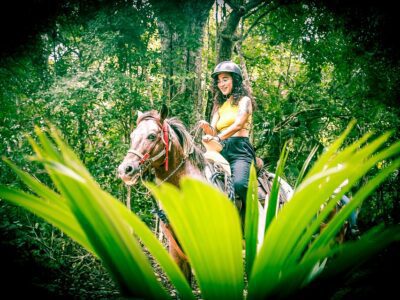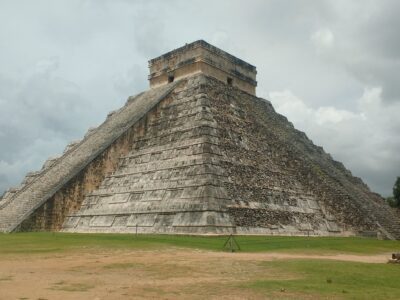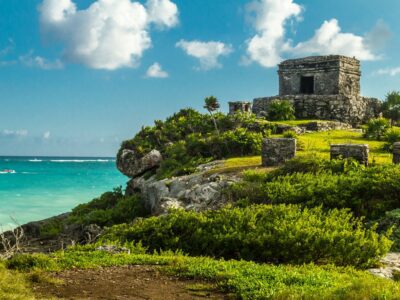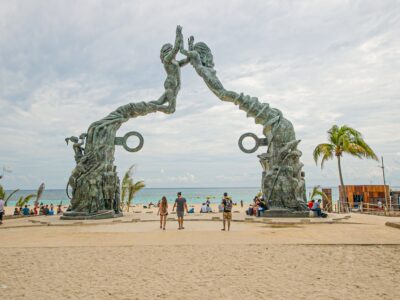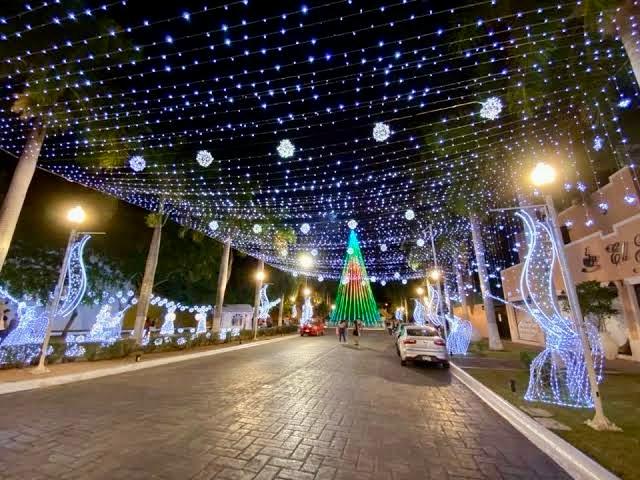The holidays in Yucatán, a region known for its rich cultural heritage and deeply rooted traditions, have undergone a notable transformation in recent decades. The arrival of migrants from other states in Mexico and abroad, especially to Mérida, has led to a cultural exchange that has enriched and, in some cases, modified the way Yucatecans celebrate the Christmas season.
Before this migratory influx, Christmas festivities in Yucatán focused on local traditions, many of them with Mayan and Catholic roots. December 12, the Day of the Virgin of Guadalupe, marked and still marks the beginning of the celebrations, followed by the posadas and the traditional birth of figures that adorned the homes. Christmas dinners included tamales, pickled turkey, and desserts like papaya candy.
Yucatecan communities, both urban and rural, were characterized by a deep sense of family and community unity. The neighborhoods were filled with Christmas carols and piñatas. In contrast, midnight masses and neighborhood gatherings were the center of social life.
With the growth of Mérida as an attractive destination for migrants from other states and countries, celebrating the holidays has acquired a new dimension. The arrival of families from states such as Veracruz, Mexico City, Monterrey, and countries such as the United States, Canada, and Argentina, has brought traditions, foods, and ways of celebrating that have enriched the Christmas panorama.

For example, Thanksgiving, an originally American holiday, has begun to influence families who celebrate Christmas and this holiday, especially those with migrant or expatriate members. On Yucatecan Christmas tables, the traditional pickled turkey now shares space with mashed potatoes, romeritos (edible herb cooked with mole and a type of shrimp croquettes), and international recipes such as panettone or roast beef.
Likewise, Christmas decorations have evolved. While clay nativity scenes and handmade ornaments remain popular, it is common to see artificial Christmas trees decorated with modern LED lights and themes influenced by global trends.
Another significant change has been the way the season is celebrated in public spaces. Mérida has seen a boom in Christmas markets and bazaars with international products, as well as events such as fairs and concerts that combine local traditions and foreign influences. Paseo de Montejo and the Historic Center are filled with lights and activities that attract both locals and tourists.
In addition, the rise of tourism in Yucatán during December has encouraged the creation of “hybrid” Christmas experiences aimed at visitors, with dinners that mix Yucatecan and international cuisine, or festivals that combine Mexican pastorelas with music and dances from other cultures.
Despite these changes, many Yucatecans are committed to preserving native traditions. Cultural organizations and communities have intensified their efforts to teach new generations about the roots of local celebrations. Piñata-making workshops, exhibitions of artisan births, and typical gastronomy competitions are examples of how pride in local things is encouraged.
However, external influences are not seen as a threat by everyone. For many, they represent an opportunity to enrich Yucatecan culture and create a mosaic of traditions that reflects the diversity of those who now call Mérida home.
Finally, the spirit of Christmas in Yucatán remains the same: a time to share, reflect, and celebrate with loved ones, whether with tamales and piñatas or with new traditions that have found a home in this land of history and human warmth. culture, and art.
By Roberto García Hidalgo for The Yucatan Times
TYT Newsroom
The post The December holidays in Yucatán: A meeting of traditions in transformation first appeared on The Yucatan Times.







